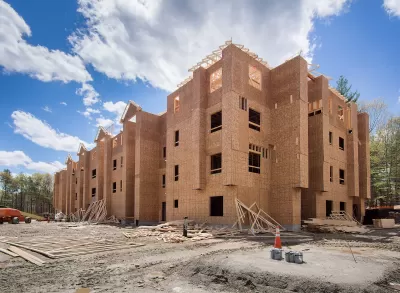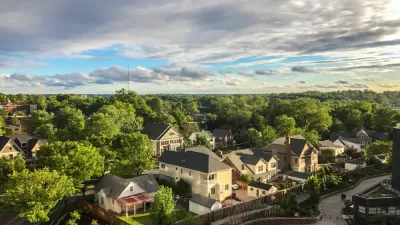A combination of ineffective funding mechanisms, strict building regulations, and inflation are pushing per-unit construction costs higher.

Writing in Crain’s Chicago Business, Judith Crown explains the various factors behind the high cost of affordable housing construction.
According to Crown, “Costs are driven by the byzantine rules of the federal tax credit system that require builders to assemble a ‘capital stack’ of funders, each with sets of fees and requirements. On top of that comes ever more rigorous government standards for accessibility, sustainability and design.”
Additionally, federal resources dedicated to affordable housing have not kept up with inflation, and the complex tax credit funding system comes with “incredibly high transaction costs.” Some experts say it would cost far less if the federal government directly subsidized affordable housing construction.
Per-unit costs sometimes increase due to the addition of new infrastructure, but improvements such as new sidewalks can help make a housing development a vehicle for broader revitalization in the surrounding neighborhood. Modern affordable housing is also designed to blend in. “Planners want to get away from the institutional design of infamous public housing projects, such as the Robert Taylor Homes and Cabrini-Green. While these 1960s-era buildings aren't directly comparable to today's scaled-down affordable projects, there's a priority to design buildings that look like they're part of the neighborhood, architects say.”
FULL STORY: The high cost of creating affordable housing

Alabama: Trump Terminates Settlements for Black Communities Harmed By Raw Sewage
Trump deemed the landmark civil rights agreement “illegal DEI and environmental justice policy.”

Planetizen Federal Action Tracker
A weekly monitor of how Trump’s orders and actions are impacting planners and planning in America.

Why Should We Subsidize Public Transportation?
Many public transit agencies face financial stress due to rising costs, declining fare revenue, and declining subsidies. Transit advocates must provide a strong business case for increasing public transit funding.

Understanding Road Diets
An explainer from Momentum highlights the advantages of reducing vehicle lanes in favor of more bike, transit, and pedestrian infrastructure.

New California Law Regulates Warehouse Pollution
A new law tightens building and emissions regulations for large distribution warehouses to mitigate air pollution and traffic in surrounding communities.

Phoenix Announces Opening Date for Light Rail Extension
The South Central extension will connect South Phoenix to downtown and other major hubs starting on June 7.
Urban Design for Planners 1: Software Tools
This six-course series explores essential urban design concepts using open source software and equips planners with the tools they need to participate fully in the urban design process.
Planning for Universal Design
Learn the tools for implementing Universal Design in planning regulations.
Caltrans
Smith Gee Studio
Institute for Housing and Urban Development Studies (IHS)
City of Grandview
Harvard GSD Executive Education
Toledo-Lucas County Plan Commissions
Salt Lake City
NYU Wagner Graduate School of Public Service




























